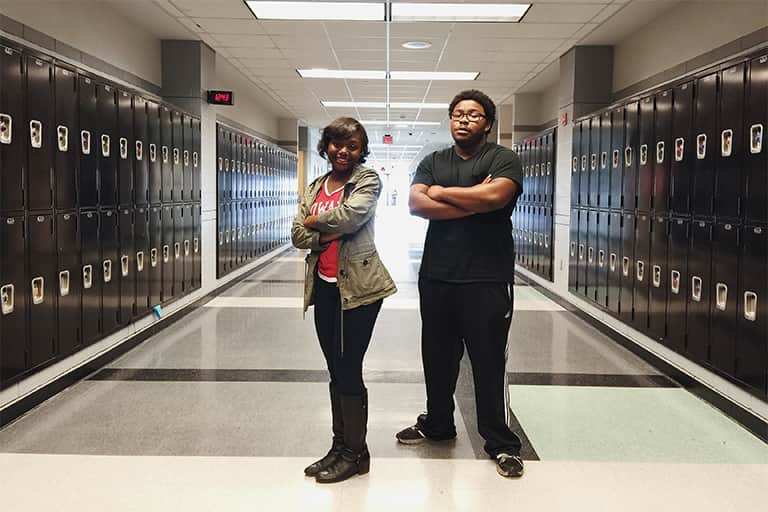For more than 30 years, a journalism outreach program in Detroit High Schools has provided students with the chance to gain skills in reporting as well as a platform for their voice to be heard. The program’s legacy continues today with the support of Crain Communications and Michigan State University’s School of Journalism.
Giving students a voice
Crain partnered with the School of Journalism in 2015 to work in the 12 participating schools.
Lucinda Davenport, director of the School of Journalism, emphasized the possibilities that are available to students thanks to the school's collaboration with Crain.
"The partnership with Crain Communications has opened new opportunities to help Detroit's journalism students become more college ready as they research and write multimedia stories for online and print publication," Davenport said.
Dean of the College of Communication Arts and Sciences Prabu David calls the program a motivator for high school students to explore their independence as journalists.
"I am always encouraged when a young person discovers his or her voice and uses the media to tell stories,” said David. “The Crain-MSU partnership opens doors for students in some of Detroit’s schools to hone their skills in storytelling and journalism."
Joy Visconti has worked with each school individually and is the liaison between the Detroit schools and MSU since January of 2013. With Crain’s involvement, there are additional professional journalists in each classroom assisting students in the brainstorming, writing and editing processes. These journalists work for a variety of Crain publications such as Automotive News, Crain’s Detroit Business, Plastics News and more.
"They want to help out in any way possible," said Visconti. "They’re always thinking of ways to grow this program. For me, it’s nice to have so many people who care and support this program."
The stories produced by students cover a variety of topics, Visconti said. And since the publication is their online and print newspaper, Visconti emphasized that they have the liberty to write about what is important to them.
"I’ve always felt, in the last year, that everyone is talking about Detroit schools and talking about the failures and talking about what’s wrong, but there’s so much that’s right and the students get to show that and write things in their words, cover the story from their personal experiences …" she said. "The school district might be bankrupt, but they are not. They have things to say and they have successes."
Those successes include a senior student from Cass Technical High School who will be attending Juilliard in New York this fall. His story was on the cover of the May issue of the student newspaper.
New partnership, new look
The Crain partnership has also inspired a new look for the printed issues which are published four times a year and distributed within the schools. Previously, the program printed on standard broadsheet newspaper with limited color. Now, the issues are larger and printed on glossy white paper with full color throughout.
"I’ve been to schools on delivery day and more people are walking around with it. I think it’s a much more attractive product and students are reading it and reading it through. They’re not just looking for the one page that goes to their school," said Visconti. "They’re seeing what other schools are doing and they’re carrying it around and saving it for later and giving it to their parents."
The program also has an online component. Visconti said the multimedia news website encourages students to write stories about current events, and enable more frequent publishing in addition to the printed issues.
Learning lifelong skills
Jeremy Steele, a professor in the School of Journalism who oversees the program, said that the benefits of the program are not limited to students who plan to go into journalism.
"Out of any of these classes and clubs, one or two kids are probably going to pursue journalism. The rest are going to be doctors and lawyers and businesspeople and teachers and who knows what else,” Steele said. “But all of them are going to be able to take away the experiences and the skills that they’ve learned from their journalism classroom."
Steele added that students involved in the program will take away a better understanding of how to do research, how to communicate ideas and how to write better.
"So, regardless of what paths these kids pursue, journalism is going to hopefully set them up for success because of those core communication skills they’ve been learning and practicing," he said.
